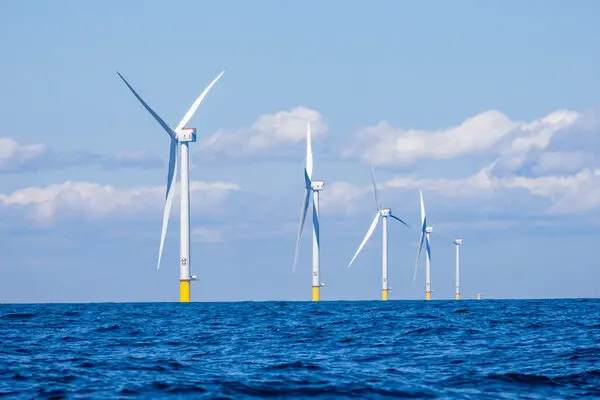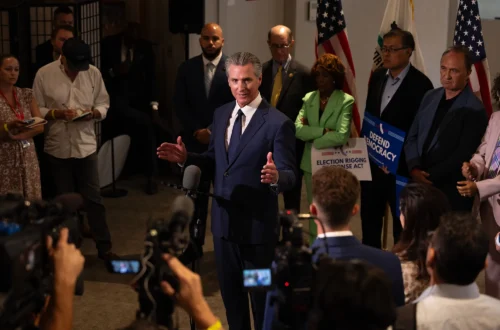Introduction to Trump’s Wind Turbine Tariff Investigation
On August 13, 2025, the Trump administration launched a national security probe into imported wind turbines and their components, a move that could reshape the landscape of renewable energy in the United States. Announced through a Federal Register notice, this investigation, spearheaded by the U.S. Commerce Department, aims to determine whether foreign wind turbine imports pose a threat to national security under Section 232 of the Trade Expansion Act. This isn’t just a bureaucratic formality—it’s a potential game-changer for the wind energy industry, which has been a cornerstone of America’s clean energy ambitions. With President Trump’s vocal criticism of wind power as a backdrop, this probe has sparked heated debates about energy policy, economic impacts, and environmental goals. Let’s dive into what this investigation means, why it’s happening, and how it could affect everything from your electricity bill to the future of green energy.
Why This Investigation Matters
The wind energy sector is a vital part of America’s renewable energy mix, contributing 16% of the nation’s electricity in 2024 alongside solar power. The possibility of tariffs—potentially as high as 25% to 50%—on imported wind turbines could raise costs for developers, slow project timelines, and impact consumers. This move aligns with Trump’s broader energy agenda, which prioritizes fossil fuels and has already seen actions like halting federal wind permits and repealing clean energy tax credits. For anyone invested in sustainability, energy costs, or American manufacturing, this investigation is a critical development worth understanding.
Background: Trump’s Stance on Wind Energy
President Trump has never been shy about his dislike for wind turbines. From calling them “ugly monsters” to labeling wind power the “scam of the century” in a Truth Social post on August 20, 2025, his rhetoric has consistently framed wind energy as inefficient, costly, and environmentally harmful. His opposition traces back to a personal grievance: a failed 2013 legal battle to block an offshore wind farm near his golf course in Aberdeenshire, Scotland. That experience seems to have cemented his view, and now, as president, he’s leveraging policy tools to act on it.
The Scottish Connection: A Personal Vendetta?
Picture this: a windswept Scottish coastline, the rolling greens of a luxury golf course, and towering wind turbines looming in the distance. For Trump, this was the view that sparked a decade-long crusade. In 2012, he testified before the Scottish Parliament, claiming turbines harmed tourism—a claim he couldn’t substantiate. Despite losing his case in the UK Supreme Court in 2015, the memory lingers. This personal history adds a layer of intrigue to the current investigation, suggesting it’s not just about economics but also a deeply personal stance.
The Investigation: What’s Happening and Why?
The U.S. Commerce Department’s probe, initiated under Section 232, is examining whether wind turbine imports undermine national security and domestic production. This section of the Trade Expansion Act allows the president to impose tariffs or quotas on imports deemed a threat. The investigation, which began quietly on August 13, 2025, and was publicized on August 21, focuses on foreign supply chains, government subsidies, and “predatory trade practices.” Earlier that week, the administration added wind turbines to a list of products facing 50% tariffs on their steel and aluminum content, signaling a broader push to curb imports.
Why National Security?
You might be wondering: how do wind turbines threaten national security? The Commerce Department’s notice doesn’t spell it out explicitly, but it’s seeking public input on issues like reliance on foreign suppliers (think Europe, Mexico, and India, which supplied $2.83 billion in wind components last year) and the potential for adversaries to “weaponize” supply chains through export restrictions. Critics argue this is a stretch, pointing out that the U.S. is self-sufficient in nacelle assembly and tower supply, though it relies heavily on imported blades and electrical components.
The Economic Impact: Who Pays the Price?
If tariffs are imposed, the ripple effects could be significant. Analysts at Capstone estimate tariffs of 25% to 50%, which could increase the cost of onshore wind projects by 4% for every 10% rise in input costs. Offshore wind projects, like those off New York’s coast, are especially vulnerable since they depend more on imports. Higher costs could stall projects, raise electricity prices, and discourage investment in an industry already grappling with inflation and supply chain issues.
A Blow to Offshore Wind
Offshore wind is a particular target. Projects like Revolution Wind off Rhode Island, already 70% complete, face uncertainty after the Trump administration ordered a construction halt on August 22, 2025. Orsted, the Danish developer behind the project, warned it needs $9.4 billion to finish Revolution and Sunrise Wind due to rising costs and policy headwinds. These projects were set to power hundreds of thousands of homes, but tariffs could make them prohibitively expensive.
Table: Economic Impacts of Potential Wind Turbine Tariffs
| Aspect | Potential Impact | Affected Stakeholders |
|---|---|---|
| Project Costs | 4% increase per 10% tariff on inputs | Developers, utilities |
| Electricity Prices | Higher costs passed to consumers | Households, businesses |
| Job Creation | Risk to 15,000–58,000 offshore wind jobs by 2030 | Workers, local economies |
| Investment | Reduced interest in new projects | Investors, renewable sector |
Environmental and Energy Implications
Wind power is a cornerstone of the fight against climate change, providing clean, renewable energy with minimal emissions. In 2024, wind and solar accounted for 16% of U.S. electricity, with wind alone powering millions of homes. Tariffs could slow this growth, making it harder to meet clean energy goals. Meanwhile, Trump’s push for oil and gas, including urging the UK to “bring back the oil” during a July 2025 visit to Scotland, signals a shift away from renewables.
The Wildlife Debate: Fact vs. Fiction
Trump has repeatedly claimed wind turbines kill birds and whales, but is there truth to it? Yes, birds can collide with turbines, but studies show the impact is minimal compared to other threats like cats or power lines. A two-year study at Scotland’s Aberdeen Bay Wind Farm found no bird strikes. As for whales, the National Oceanic and Atmospheric Administration says there’s no evidence linking offshore wind to whale deaths. These claims seem more like rhetorical flourishes than grounded concerns.
The Industry’s Response: Fighting Back
The wind industry isn’t taking this lying down. Companies like Orsted are scrambling to secure funding, while states like Connecticut are exploring legal options to protect projects like Revolution Wind. Seventeen states sued the administration in May 2025 over its wind permit ban, arguing it threatens billions in investment. Industry groups like the National Ocean Industries Association warn that these policies could lead to higher electricity prices at a time when demand is surging for AI data centers and electric vehicles.
A Personal Perspective: The Human Cost
I once visited a wind farm in Iowa, where turbines stretched across the horizon like silent giants. The local community was proud—not just of the clean energy but of the jobs and revenue the project brought. Farmers leased their land, workers found stable employment, and the town buzzed with optimism. The idea that tariffs could choke off similar projects feels like a gut punch to those communities banking on renewables for their future.
Pros and Cons of the Tariff Investigation
Pros
- Boost to Domestic Manufacturing: Tariffs could incentivize U.S. production of wind turbine components, reducing reliance on imports.
- National Security Argument: Limiting foreign supply chains might protect critical infrastructure from potential disruptions.
- Alignment with Policy Goals: Supports Trump’s broader agenda of prioritizing fossil fuels and domestic industry.
Cons
- Higher Energy Costs: Increased project costs could raise electricity prices for consumers.
- Job Losses: Threatens thousands of jobs in the renewable sector, particularly offshore wind.
- Environmental Setback: Slowing wind energy growth undermines climate goals and clean energy progress.
- Project Delays: Ongoing projects face uncertainty, potentially stalling billions in investment.
Comparison: Wind Energy vs. Fossil Fuels
| Factor | Wind Energy | Fossil Fuels |
|---|---|---|
| Cost | 53% cheaper than fossil fuels globally (IRENA) | Historically cheaper but volatile due to global markets |
| Emissions | Near-zero carbon emissions | High CO2 emissions, contributing to climate change |
| Job Creation | 15,000–58,000 potential offshore wind jobs by 2030 | Stable but declining as renewables grow |
| Reliability | Weather-dependent but improving with technology | Consistent but finite resource |
People Also Ask (PAA)
Why is Trump targeting wind turbines?
Trump’s opposition stems from a mix of personal dislike (dating back to his Scottish golf course battle) and a policy preference for fossil fuels. He’s called wind power a “scam” and claims turbines harm wildlife and landscapes, though scientific evidence disputes the severity of these impacts.
How will tariffs affect wind energy projects?
Tariffs could increase project costs by 4% for every 10% rise in input costs, particularly for offshore wind, which relies heavily on imports. This could delay or cancel projects, raise electricity prices, and reduce investment in renewables.
Are wind turbines bad for the environment?
While turbines can impact birds, the effect is minimal compared to other threats like habitat loss or pesticides. Claims about whale deaths lack evidence. Wind power remains one of the cleanest energy sources, with 80–95% of turbine materials recyclable.
What is Section 232, and why is it used here?
Section 232 of the Trade Expansion Act allows the president to impose tariffs or quotas on imports deemed a national security threat. The Trump administration is using it to investigate whether foreign wind turbine imports undermine U.S. security and domestic production.
FAQ Section
What are the potential tariffs on wind turbines?
Analysts predict tariffs of 25% to 50% on wind turbine components, in line with other Section 232 duties. This follows a 50% tariff on steel and aluminum content in turbines announced in August 2025.
How do tariffs impact consumers?
Higher tariffs increase the cost of wind projects, which utilities may pass on to consumers through higher electricity bills. A 10% rise in input costs could raise the levelized cost of wind energy by 4%.
Why does Trump dislike wind turbines?
His opposition began with a failed attempt to block a wind farm near his Scottish golf course in 2013. He’s since criticized turbines as ugly, costly, and harmful to wildlife, though many of these claims are exaggerated or unsupported.
Where can I learn more about wind energy policies?
Visit the U.S. Department of Energy’s Wind Energy Technologies Office (windexchange.energy.gov) for data on wind projects and policies. For tariff updates, check the Federal Register or news outlets like Bloomberg and The New York Times.
What tools can track renewable energy trends?
Platforms like Wood Mackenzie and IRENA offer detailed reports on wind energy costs and growth. For real-time policy updates, follow X accounts like @climate or @AriNatter for industry insights.
What Can You Do? Taking Action
If you’re passionate about clean energy, there are ways to stay engaged:
- Stay Informed: Follow reputable sources like The New York Times, Bloomberg, or the Center for American Progress for updates on energy policy.
- Support Local Projects: Advocate for wind farms in your community by attending public hearings or contacting local officials.
- Explore Careers: The renewable sector still offers jobs in engineering, manufacturing, and policy. Check sites like RenewableEnergyJobs.com for opportunities.
- Reduce Your Footprint: Invest in energy-efficient appliances or solar panels for your home to offset reliance on grid power.
Conclusion: A Crossroads for Clean Energy
The Trump administration’s wind turbine investigation is more than a trade policy—it’s a pivotal moment for America’s energy future. Tariffs could reshape the economics of wind power, slow the transition to renewables, and impact everything from jobs to electricity bills. While the national security argument raises eyebrows, the real debate is about priorities: fossil fuels versus clean energy, domestic manufacturing versus global supply chains, and short-term costs versus long-term sustainability. As the probe unfolds, it’s worth asking: what kind of energy future do we want? For now, the wind industry—and the planet—waits to see which way the blades will turn.





